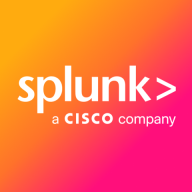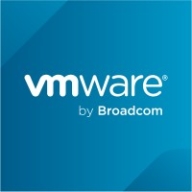

Splunk AppDynamics and VMware Aria Operations for Applications are contenders in the application performance management sector. Splunk AppDynamics has a slight advantage with its real-time transaction monitoring and user experience insights.
Features: Splunk AppDynamics provides detailed transaction visibility, code-level deep dives, and extensive application performance surveillance. It offers business transaction tracking, database monitoring, and user experience insights. VMware Aria Operations for Applications integrates strongly within VMware ecosystems, providing a holistic view of virtualized environments. It excels in advanced capacity planning and operational efficiency for VMware infrastructure users.
Room for Improvement: Users of Splunk AppDynamics point to complexities in features like async monitoring, improvements needed in licensing, and better cloud integration. VMware Aria Operations for Applications can enhance application-specific monitoring and third-party platform integration, as well as improve automation and intuitive dashboards for multi-cloud management.
Ease of Deployment and Customer Service: Splunk AppDynamics offers diverse deployment options but can have a complicated setup. Its support is knowledgeable but sometimes slow. VMware Aria Operations for Applications integrates seamlessly with VMware setups, simplifying deployments. Its customer service is prompt and effective, with room for improvement in third-party integration support.
Pricing and ROI: Splunk AppDynamics is seen as expensive with complex licensing, though it offers high ROI through feature richness that reduces resolution times. VMware Aria Operations for Applications provides competitive pricing and good value through cost-management features, though costs can rise with additional licenses for advanced features and integrations.
| Product | Market Share (%) |
|---|---|
| Splunk AppDynamics | 4.1% |
| VMware Aria Operations for Applications | 1.0% |
| Other | 94.9% |


| Company Size | Count |
|---|---|
| Small Business | 55 |
| Midsize Enterprise | 36 |
| Large Enterprise | 189 |
| Company Size | Count |
|---|---|
| Small Business | 4 |
| Midsize Enterprise | 1 |
| Large Enterprise | 10 |
Splunk AppDynamics enhances application performance monitoring with advanced diagnostics and real-time insights, offering seamless end-to-end transaction tracking and infrastructure visibility.
AppDynamics provides critical tools for businesses to analyze application behavior and performance. Through innovative features like transaction snapshot analysis and adaptable dashboards, users can quickly identify and address issues, ensuring high levels of system uptime and efficiency. It is designed to support complex environments including Kubernetes and AWS, enhancing user experience by detecting performance issues early. Despite needing improvements in network monitoring and integration, it remains a robust option for tracking application health.
What are the key features of AppDynamics?In industries like financial services and e-commerce, AppDynamics facilitates performance tracking across distributed systems, optimizing infrastructure to meet consumer demands. It excels in environments needing precise transaction monitoring and is pivotal in delivering high value and satisfaction.
VMware Tanzu Observability by Wavefront is a powerful tool for monitoring and analyzing the performance and availability of applications and infrastructure in real-time.
With its comprehensive monitoring capabilities, visualizing and analyzing data becomes effortless. The real-time alerting system ensures timely issue resolution, while scalability and a user-friendly interface provide a seamless experience for smooth operations.
We monitor all Application Performance Monitoring (APM) and Observability reviews to prevent fraudulent reviews and keep review quality high. We do not post reviews by company employees or direct competitors. We validate each review for authenticity via cross-reference with LinkedIn, and personal follow-up with the reviewer when necessary.